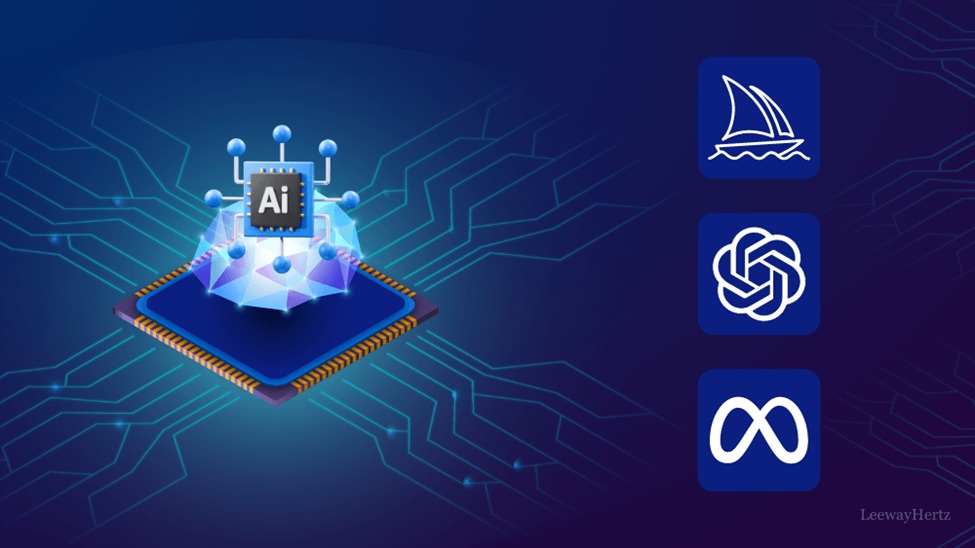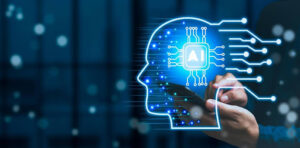Artificial Intelligence (AI) is becoming an integral part of various industries, revolutionizing processes and creating new opportunities. Two key areas where AI is making significant strides are education and broader industry applications. Understanding the diverse AI use cases in education and other sectors can help organizations leverage AI to enhance efficiency, innovation, and user experiences.
AI Use Cases in Education
The education sector is undergoing a transformative shift as AI technologies are integrated into teaching, learning, and administrative processes. AI’s ability to personalize learning experiences, automate administrative tasks, and provide valuable insights is driving this change.
- Personalized Learning: One of the most impactful applications of AI in education is the ability to provide personalized learning experiences. AI-powered platforms can analyze a student’s learning style, strengths, and weaknesses to tailor educational content to their specific needs. This adaptive learning approach helps students learn at their own pace and focus on areas where they need the most improvement. For example, an AI-driven platform might adjust the difficulty of questions based on the student’s performance, ensuring they are constantly challenged without being overwhelmed.
- Automated Grading: AI can significantly reduce the time educators spend on grading by automating the assessment of assignments, quizzes, and exams. AI-powered grading systems can evaluate multiple-choice questions, essays, and even coding assignments with high accuracy. This allows educators to focus more on teaching and less on administrative tasks. Additionally, these systems can provide detailed feedback to students, helping them understand their mistakes and improve their performance.
- Virtual Tutors and Assistants: AI-driven virtual tutors can provide additional support to students outside the classroom. These AI tutors are available 24/7, offering explanations, answering questions, and guiding students through difficult concepts. This constant availability ensures that students can get help whenever they need it, improving their learning outcomes. Moreover, AI assistants can help educators by scheduling meetings, managing classroom activities, and organizing educational content, making their jobs more manageable.
- Predictive Analytics for Student Success: AI can analyze large amounts of data to predict student outcomes and identify those at risk of falling behind. By monitoring factors such as attendance, participation, and academic performance, AI systems can alert educators to students who may need additional support. This proactive approach allows educators to intervene early and provide targeted assistance, increasing the likelihood of student success.
- Administrative Efficiency: Beyond the classroom, AI is streamlining administrative processes within educational institutions. From managing student records to optimizing resource allocation, AI can automate many of the routine tasks that take up valuable time. For instance, AI can help in course scheduling by analyzing student preferences, faculty availability, and classroom resources to create optimized timetables.
AI Use Cases and Applications Across Industries
AI’s versatility allows it to be applied across a wide range of industries, each benefiting from AI-driven innovations in different ways. From healthcare and finance to manufacturing and retail, AI is enabling new applications that were previously unimaginable.
- Healthcare: In healthcare, AI is being used to improve diagnostics, personalize treatment plans, and manage patient data. For example, AI algorithms can analyze medical images to detect early signs of diseases like cancer, often with greater accuracy than human doctors. Additionally, AI-driven tools can recommend personalized treatment plans based on a patient’s genetic makeup, lifestyle, and medical history.
- Finance: AI is transforming the financial industry by enhancing fraud detection, automating trading, and improving customer service. AI systems can monitor transactions in real-time to detect fraudulent activities, using machine learning models that recognize patterns indicative of fraud. Moreover, AI-powered trading algorithms can analyze market data and execute trades faster and more accurately than human traders.
- Manufacturing: In manufacturing, AI is optimizing production processes, improving quality control, and enabling predictive maintenance. AI systems can analyze data from sensors on production lines to predict when equipment is likely to fail, allowing for timely maintenance that prevents costly downtime. Additionally, AI can enhance quality control by inspecting products for defects with greater precision than human inspectors.
- Retail: AI is reshaping the retail industry by enhancing customer experiences, optimizing supply chains, and personalizing marketing efforts. AI-powered recommendation engines analyze customer behavior to suggest products that are likely to interest them, increasing sales and customer satisfaction. Moreover, AI can optimize inventory management by predicting demand and adjusting stock levels accordingly, reducing waste and improving profitability.
- Transportation and Logistics: AI is improving efficiency in transportation and logistics through route optimization, autonomous vehicles, and demand forecasting. AI algorithms can analyze traffic patterns, weather conditions, and other variables to determine the most efficient routes for deliveries, reducing fuel consumption and delivery times. In addition, AI is playing a key role in the development of autonomous vehicles, which have the potential to revolutionize the transportation industry.
For a comprehensive overview of AI’s impact across different sectors, you can read our detailed article on AI use cases and applications.
Conclusion
AI is transforming industries by introducing new capabilities and enhancing existing processes. Whether in education, healthcare, finance, or other sectors, the applications of AI are vast and growing. By understanding and leveraging these AI use cases, organizations can stay ahead of the curve and drive innovation in their respective fields.







Be First to Comment